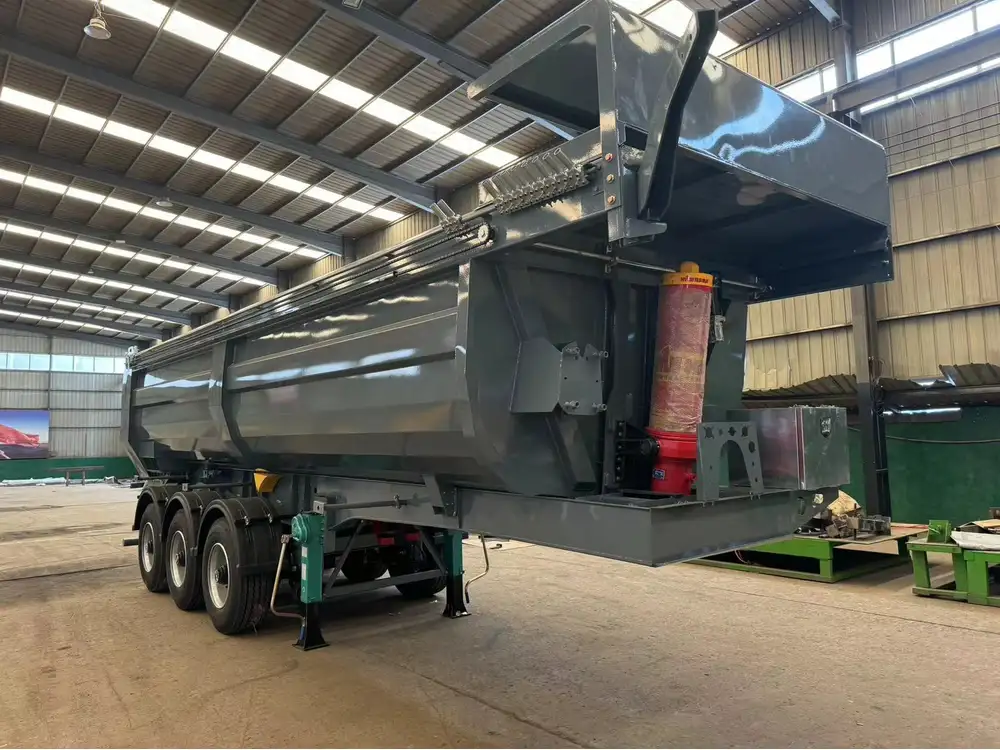When it comes to transporting materials, choosing the right dump trailer is crucial for efficiency and productivity. One common inquiry that emerges in discussions about dump trailers is: how many yards is a 7x16x4 dump trailer? Understanding the capacity of this size of dump trailer is essential for builders, landscapers, and contractors alike, as it will dictate the amount of material that can be moved in a single trip.
The Basics of Dump Trailer Dimensions
To answer the question accurately, we must dissect the dimensions provided:
- 7 feet (width)
- 16 feet (length)
- 4 feet (height)
With these dimensions, we effectively have a rectangular prism, which is the shape of the dump trailer’s cargo area. The first step in calculating the volume is converting these dimensions into a compatible unit for measurement, typically yards. There are 3 feet in a yard, so we convert accordingly:
- Width: 7 feet = ( \frac{7}{3} ) yards ≈ 2.33 yards
- Length: 16 feet = ( \frac{16}{3} ) yards ≈ 5.33 yards
- Height: 4 feet = ( \frac{4}{3} ) yards ≈ 1.33 yards
Calculating the Volume
The volume ( V ) of a rectangular prism is calculated using the formula:
[ V = \text{Length} \times \text{Width} \times \text{Height} ]Substituting the values in yards:
[ V = 5.33 \, \text{yards} \times 2.33 \, \text{yards} \times 1.33 \, \text{yards} ]Calculating this gives:
[ V ≈ 5.33 \times 2.33 \times 1.33 ≈ 16.5 \, \text{cubic yards} ]Thus, a 7x16x4 dump trailer has a capacity of approximately 16.5 cubic yards.

Practical Application of Volume
Understanding how many yards a dump trailer can hold is not merely an academic exercise. It translates directly into practical applications, allowing operators to make informed decisions about loading various materials:
Common Materials and Their Weights:
| Material | Weight per Cubic Yard | Total Weight for 16.5 Cubic Yards |
|---|---|---|
| Topsoil | 1,200 lbs | 19,800 lbs |
| Gravel | 1,500 lbs | 24,750 lbs |
| Sand | 1,600 lbs | 26,400 lbs |
| Mulch | 400 lbs | 6,600 lbs |
| Concrete (dry mix) | 3,800 lbs | 62,700 lbs |
The ability to understand this metric helps contractors and builders to avoid overloading trailers, which can create safety hazards and equipment damage.
Payload Considerations
When transporting loads, it’s essential to consider the total weight capacity of your dump trailer. Most 7x16x4 dump trailers have a Gross Vehicle Weight Rating (GVWR) that limits how much weight can be safely carried. Exceeding this rating can result in towing difficulties, increased wear on the trailer, and potential legal penalties.
It’s advisable to check the manufacturer’s specifications for your specific trailer model to determine the maximum payload capacity. Typically, a 7×16 dump trailer might have a GVWR ranging from 10,000 to 14,000 pounds, including both the weight of the trailer and its payload.

Types of Dump Trailers
Understanding the various types of dump trailers is another significant aspect of maximizing operational efficiency. Different designs cater to specific needs:
- Standard Dump Trailers: Best for general landscaping, hauling gravel, or dirt.
- Tilt Trailers: Ideal for loading equipment or heavier materials that require an angle for unloading.
- Dump Trucks: Larger vehicles specifically designed for heavy hauling; however, they often come with a higher initial cost.
- Enclosed Dump Trailers: Better suited for transporting sensitive materials or debris, providing protection from the elements.
Key Benefits of Utilizing a Dump Trailer
Investing in a suitable dump trailer offers various advantages, including:
- Increased Efficiency: Loading and unloading materials becomes much more manageable.
- Versatile Usage: Suitable for construction, landscaping, and even waste management.
- Durability: Many dump trailers are designed to withstand harsh conditions.
- Cost-Effective: Reducing the number of trips needed to transport materials saves time and fuel costs.
Common Questions Regarding Dump Trailers
Here are some pertinent questions you may have when considering the use of a 7x16x4 dump trailer and their respective answers:

1. What is the best way to load a dump trailer for optimal weight distribution?
Properly loading a dump trailer boosts safety and handling. Always ensure:
- Heavier materials are loaded forward, closer to the trailer’s axle.
- Distributing materials evenly across the trailer’s width prevents tipping.
2. How can I maintain my dump trailer?
Regular maintenance includes:
- Inspecting brakes, tires, and electrical systems.
- Washing the trailer to remove debris and prevent rust.
- Lubricating moving parts to ensure smooth operation.
3. What are the legal weight limits for towing a dump trailer?
Each state or country has its regulations regarding weight limits. It’s crucial to check local laws to ensure compliance. The total weight (trailer plus payload) should remain within the vehicle’s towing capacity as well.

4. Are there specific licenses required for towing dump trailers?
Typically, a standard driver’s license suffices for smaller trailers. However, larger trailers may require a special endorsement, so check local regulations before towing.
Conclusion: Maximizing Your Dump Trailer Usage
Understanding the cubic yardage capacity of a 7x16x4 dump trailer—approximately 16.5 cubic yards—equips you with the knowledge to optimize your operations. Careful consideration of weight capacities, materials, and load distribution can lead to increased efficiency and safety during transportation tasks.
Whether you are involved in construction, landscaping, or waste management, a well-suited trailer significantly influences your operational success. We encourage all prospective and current dump trailer users to make informed choices based on their unique needs and to regularly assess and adapt their strategies as required.
With careful management and knowledge of your equipment’s capabilities, you can maximize the effectiveness of your dump trailer, turning a simple transportation tool into a cornerstone of your operational success.



